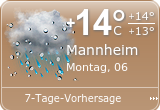
navajo country - since 1979



navajo country - since 1979 |

|
 |
|---|
INSTRUCTION OF GROWING: PEDIOCACTUS, SCLEROCACTUS, NAVAJOA, TOUMEYA, YUCCAA lot has already been written about growing the difficult to germinate Pedio´s, Sclero´s, Navajoa and Toumeya from seed, but the following method has given me the best results. The cleaned seeds, treated with fungicide are kept at 30°C by day and 15-20°C at night in a germination box/propagator. Those seeds that have not germinated after 2-3 weeks are carefully pricked-open with a needle and replanted in the germination box. After another 10-14 days furthe seeds will germinate. Its worth mentioning that the seeds are not cold (frosted) pretreated. They are germinated in a mix of peat and sand.A few weeks after germination, the tiny seedlings are grafted into hardy stocks such as Opuntia or Echinocereus. This is especially recommended for those taxa of more difficult germination, eg. Pediocactus bradyi and subspecies, P. sileri, P. paradinei, Sclerocactus glaucus, S. whipplei, S. parviflorus, S. mesae-verdae, Navajoa peeblesiana, Toumeya papyracantha. Of course other grafting stocks can be used, eg. Pereskiopsis, Echinopsis or Trichocereus. Sclerocactus pubispinus S. polyancistrus, S. wetlandicus and subspecies, and all other Pediocactus all germinate very well. If you want further informations I am always at your service. Moreover, I would greatly appreciate any hints or tips from you about these rare cacti. See book no. 1 page 144-145, book no. 2 page 152-153. YUCCAS are comparatively much simpler to germinate. Either germinate them under "normal" conditions for germinating cacti or, after the worst of te Spring frosts have passed, you can sow them directly into the garden in free-draining soil. Germination is very good as a rule end the seedlings grow rapidly in their first year. See book no. 5- Yucca I, page 221.
ANZUCHTANLEITUNGÜber die aussaat der schwer keimenden pedio's und sclero's wurde schon viel geschrieben. dem moechte ich meine methode hinzufuegen. die gereinigten, mit einem geeigneten fungizid bearbeiteten samen stelle ich tagsueber bei einer temperatur von 30 grad c bei kuenstlichem licht, nachts bei 15 grad c bis 20 grad c, in eine keimbox. saemtliche nach etwa 2 - 3 wochen nicht aufgegangenen samen werden nochmals bearbeitet. die nun weiche schale wird mit einer nadel geoeffnet und die samen kommen danach erneut in die anzuchtbox. nach etwa 10 - 14 tagen keimen wiederum einige samen. mit dieser methode habe ich bisher die besten erfolge erzielt. erwaehnen moechte ich, daß die samen keiner frostvorbehandlung unterzogen werden. das aussaatsubstrat besteht aus einem gemisch von torf und quarzsand.dies halte ich jedoch für nebensaechlich, ebenso wie den zeitpunkt der aussaat. einige wochen nach dem keimen pfropfe ich die noch winzigen saemlinge auf harte unterlagen wie opuntia oder echinocereen.ich denke dabei an besonders schwierig zu pflegende pedio's wie bradyi, sileri, brady s despainii, paradinei, navajoa peeblesiana, toumeya papyracantha bzw. sclero's glaucus, whipplei, parviflorus und mesae-verdae.natuerlich koennen zur pfropfung auch unterlagen wie z.b. pereskiopsis, echinopsis oder trichocereus verwendet werden. sehr gut keimen sclerocactus pubispinus, spinosior, polyancistrus, wetlandicus und fast alle pediocacteen. gerne stehe ich ihnen fuer weitere informationen zur verfuegung: auch wuerde ich mich ueber tips oder hinweise freuen. |
 |
|---|